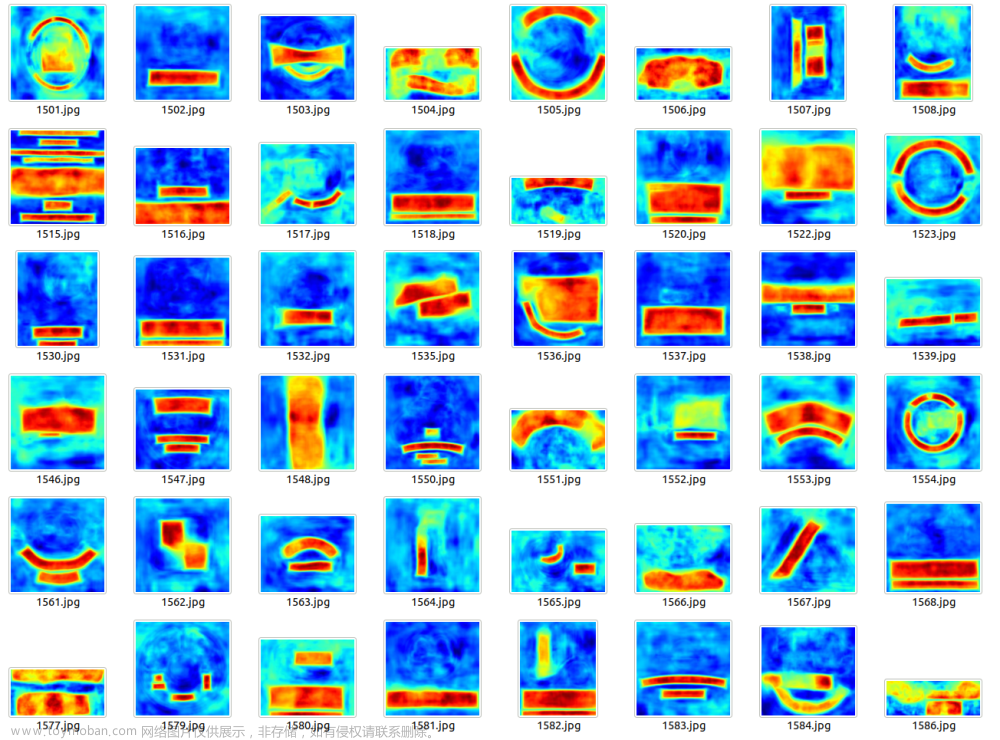1. 提取模型中间层输出(hook, .register_forward_hook(hook=hook))
1.1 定义模型
import torch
import torch.nn as nn
class StudentModel(nn.Module):
def __init__(self, input=25, output=2):
super().__init__()
self.l1 = nn.Linear(input, 16)
self.l2 = nn.Linear(16, 32)
self.l3 = nn.Linear(32, 2)
self.relu = nn.ReLU()
self.softmax = nn.Softmax(dim=1)
def forward(self, X):
x = X.reshape(-1, 25)
x = self.relu(self.l1(x))
x = self.relu(self.l2(x))
x = self.relu(self.l3(x))
x = self.softmax(x)
res = x.max(1).indices
return torch.tensor(res, dtype=float)
sm = StudentModel()
'''
StudentModel(
(l1): Linear(in_features=25, out_features=16, bias=True)
(l2): Linear(in_features=16, out_features=32, bias=True)
(l3): Linear(in_features=32, out_features=2, bias=True)
(relu): ReLU()
(softmax): Softmax(dim=1)
)
'''
1.2 定义hook函数 调用.register_forward_hook(hook=hook)
features_in_hook = []
features_out_hook = []
def hook(module, fea_in, fea_out):
features_in_hook.append(fea_in)
features_out_hook.append(fea_out)
return None
layer = sm.l1
layer.register_forward_hook(hook=hook)
'''
<torch.utils.hooks.RemovableHandle at 0x11b18a5b0>
'''
1.3 模型跑数据
sm(Xtrain)
'''
tensor([0., 1., 1., 1., 1., 1., 1., 1., 0., 1., 1., 1., 1., 1., 1., 1., 1., 1.,
1., 1., 1., 0., 1., 1., 1., 1., 0., 1., 1., 1., 1., 1., 1., 1., 1., 0.,
1., 0., 1., 1., 1., 1., 1., 1., 1., 1., 1., 0., 1., 1., 1., 1., 1., 1.,
1., 1., 0., 1., 1., 1., 1., 1., 1., 1., 1., 1., 1., 1., 1., 1., 1., 1.,
1., 1., 1., 1., 0., 1., 1., 1., 1., 1., 0., 1., 1., 1., 1., 1., 0., 1.,
1., 1., 1., 0., 1., 1., 1., 1., 1., 1.], dtype=torch.float64)
'''
1.4 获取中间层输出
features_in_hook[0][0].shape
'''
torch.Size([100, 25])
'''
features_in _hook
'''
[(tensor([[0.4921, 0.8465, 0.3133, ..., 0.8547, 0.0275, 0.0872],
[0.1217, 0.5101, 0.9094, ..., 0.0517, 0.5217, 0.8201],
[0.3493, 0.6255, 0.7081, ..., 0.6097, 0.3401, 0.0455],
...,
[0.6717, 0.0128, 0.2326, ..., 0.1152, 0.5885, 0.9372],
[0.8665, 0.8432, 0.3781, ..., 0.3370, 0.8750, 0.4666],
[0.7063, 0.1330, 0.3501, ..., 0.5658, 0.2588, 0.3254]],
grad_fn=<ReshapeAliasBackward0>),)]
'''
features_out_hook[0].shape
'''
torch.Size([100, 16])
'''
features_out_hook
'''
tensor([[ 0.1448, -0.0800, -0.1307, ..., -0.1472, 0.6660, -0.0465],
[ 0.4460, 0.2587, -0.1345, ..., -0.4809, 0.8669, -0.2805],
[ 0.2118, 0.0445, -0.1910, ..., -0.5179, 0.9163, -0.0972],
...,
[ 0.1761, -0.0178, -0.4799, ..., -0.3769, 0.6353, -0.3738],
[ 0.1534, -0.0314, -0.2041, ..., -0.3669, 1.0264, -0.1857],
[-0.0438, 0.0639, -0.2547, ..., -0.4396, 0.7633, -0.2492]],
grad_fn=<AddmmBackward0>)
'''
2. 插值处理 上下采样 torch.nn.functional.interpolate()
import torch.nn.functional as F
'''
mode
"nearest" 复制最近的一个元素实现插值,输入必须4维
"linear" 线性插值
...
'''
x = torch.rand(1, 1, 3, 4)
F.interpolate(x, (5, 5), mode="nearest").shape
'''
torch.Size([1, 1, 5, 5])
'''
x = torch.rand(1, 3, 3)
F.interpolate(x, 5, mode="linear").shape
'''
torch.Size([1, 3, 5])
'''
3. 指定维度求最大值索引 torch.max(x, dim=).indices
x = torch.rand(3, 2)
'''
tensor([[0.5832, 0.0757],
[0.4064, 0.4217],
[0.1081, 0.5463]])
'''
torch.max(x, dim=1)
'''
每行的最大值及其索引
torch.return_types.max(
values=tensor([0.5832, 0.4217, 0.5463]),
indices=tensor([0, 1, 1]))
'''
torch.max(x, dim=1).indices
'''
适合二分类
tensor([0, 1, 1]))
'''
4. 模型转GPU计算
需要转换的对象
- 模型
- 损失函数
- 数据(特征数据、标签)
4.1 .cuda()
'''
.cuda(0) 指定第0块GPU
'''
if torch.cuda.is_available():
model = model.cuda()
loss_fn = loss_fn.cuda()
X = X.cuda()
y = y.cuda()
4.2 .to(device)
# 第二种方法
device = torch.device('cuda') if torch.cuda.is_available() else torch.device('cpu')
device0 = torch.device('cuda:0')
model.to(device)
loss_fn.to(device)
X = X.to(device)
y = y.to(device)
4.3 多GPU并行计算
4.3.1 单进程多GPU训练(DP)模式 torch.nn.DataParallel
- 并行的多卡都是由一个进程进行控制,在进行梯度的传播时,是在主GPU上进行的。
- 将模型布置到多个指定GPU上
model = torch.nn.DataParallel(model,device_ids=device_list) - 指定模型布置的主GPU
main_dev = 0model.to(main_dev) - 优化器放到主GPU
optimizer = optim.Adam(model.parameters(), lr=0.001)optimizer.to(device) - 数据放到主GPU
data.to(main_dev)
device_list = [0, 1, 2, 3]
main_dev = device_list[0] #主GPU,也就是分发任务和结果回收的GPU,也是梯度传播更新的GPU
model = torch.nn.DataParallel(model,device_ids=device_list)
model.to(main_dev)
for data in train_dataloaders:
model.train(True)
inputs, labels = data
inputs = Variable(inputs.to(main_dev)) #将数据放到主要GPU
labels = Variable(labels.to(main_dev))
4.4 限定GPU可用
import os
os.environ["CUDA_VISIBLE_DEVICES"] = "1,2"
# 从可用GPU中搜索第0和1的GPU
Model = nn.DataParallel(Model, device_ids=[0,1])
5. 模型更改、添加和删除层
5.1 model.add_module()
m = Treelinears()
m
'''
TreeLinears(
(l1): Linear(in_features=8, out_features=4, bias=True)
(l2): Linear(in_features=4, out_features=2, bias=True)
(l3): Linear(in_features=2, out_features=1, bias=True)
)
'''
m.add_module('add_l4', nn.Linear(1, 1))
m
'''
TreeLinears(
(l1): Linear(in_features=8, out_features=4, bias=True)
(l2): Linear(in_features=4, out_features=2, bias=True)
(l3): Linear(in_features=2, out_features=1, bias=True)
(add_l4): Linear(in_features=1, out_features=1, bias=True)
)
'''
5.2 Sequential().add_module()
sq = nn.Sequential()
sq.add_module('add_l1', nn.Linear(1, 1))
sq.add_module('add_l2', nn.Linear(1, 1))
'''
Sequential(
(add_l1): Linear(in_features=1, out_features=1, bias=True)
(add_l2): Linear(in_features=1, out_features=1, bias=True)
)
'''
5.3 del model.layer
del sq.add_l1
'''
Sequential(
(add_l2): Linear(in_features=1, out_features=1, bias=True)
)
'''
6. 获取模型参数量、FLOPs
6.1 thop.profile
import torch
from thop import profile
def get_flops_params_idx4(model, input_shape=[256, 1, 28, 28]):
"""
:param model: 传入模型
:param inshape: 模型的输入shape
:return : (flops, params)
"""
tensor = (torch.rand(*inpust_shape), )
flops, params = profile(model, tensor) # 更改源码 不print
return flops, params
6.2 torch 自带接口计算参数量
# 参数量
sum([param.nelement() for param in model.parameters()])
7. 损失函数
7.1 均方误差 torch.nn.MSELoss()
import torch
import torch.nn as nn
# 预测是[0,1,2]的概率
X = [[0.1, 0.8, 0.3],
[0.2, 0.9, 0.1]]
X = torch.tensor(X)
# 真实标签
y = [[0], [0]]
y = torch.tensor(y)
'''
均方误差,多用于回归
X输入维度必须为(N, C),N样本数,C类别数
y输入维度必须为(N, 1), N样本数,第二维度1填写真实标签值
'''
nn.MSELoss()(X, y)
'''
tensor(0.2667)
'''
7.2 交叉熵损失 torch.nn.CrossEntropyLoss()
nn.CrossEntropyLoss 在内部执行了 softmax 操作,不需要显式地在模型的最后一层添加 softmax 激活函数。
import torch
import torch.nn as nn
X = torch.rand(10, 8)
y = torch.randint(0, 2, (10, ))
'''
交叉熵损失,多用于多分类
X输入维度必须为(N, C),N样本数,C类别数, dtype=float
y输入维度必须为(N, ), 第一维度N为样本数,填写真实标签值, dtype=long
'''
nn.CrossEntropyLoss()(X, y)
'''
tensor(1.0546)
'''
7.3 torch.nn.NULLLoss()
-
输入输出与
nn.CrossEntropyLoss()一样, -
区别在于: 内部没有softmax操作,需要显示调用
torch.log_softmax(x, dim=1), 再输入nn.NULLLoss()。
7.4 torch.nn.BCELoss()/BCEWithLogitsLoss()
解决二分类问题,模型输出层设置为nn.Linear(n, 1)
-
BCELoss()(input, target)解决二分类问题,模型输出层应接nn.sigmoid();
input 维度不定,target维度与input维度相同,值为0or1; -
BCEWithLogitsLoss() >>> nn.sigmoid + nn.BCELoss文章来源:https://www.toymoban.com/news/detail-648416.html
8. 二分类 概率->索引
x = torch.tensor([[1, 2],
[3, 2]])
torch.max(x, 0)
'''
torch.return_types.max(
values=tensor([3, 2]),
indices=tensor([1, 0]))
'''
torch.max(x, 0).indices
'''
tensor([1, 0])
'''
9. pickle 保存读取数据/模型
import pickle
dic = {'a': [1, 2],
'b':[1, 2, 3]}
with open('dic.pkl', 'wb') as fp:
pickle.dump(dic, fp)
with open('dic.pkl', 'rb') as fp:
d = pickle.load(fp)
或文章来源地址https://www.toymoban.com/news/detail-648416.html
import pickle
fp = open('dic.pkl', 'wb')
pickle.dump(cols, fp)
fp.close()
fp = open('dic.pkl', 'rb')
data = pickle.load(fp)
fp.close()
到了这里,关于【Pytorch】提取模型中间层输出(hook, .register_forward_hook(hook=hook))的文章就介绍完了。如果您还想了解更多内容,请在右上角搜索TOY模板网以前的文章或继续浏览下面的相关文章,希望大家以后多多支持TOY模板网!










